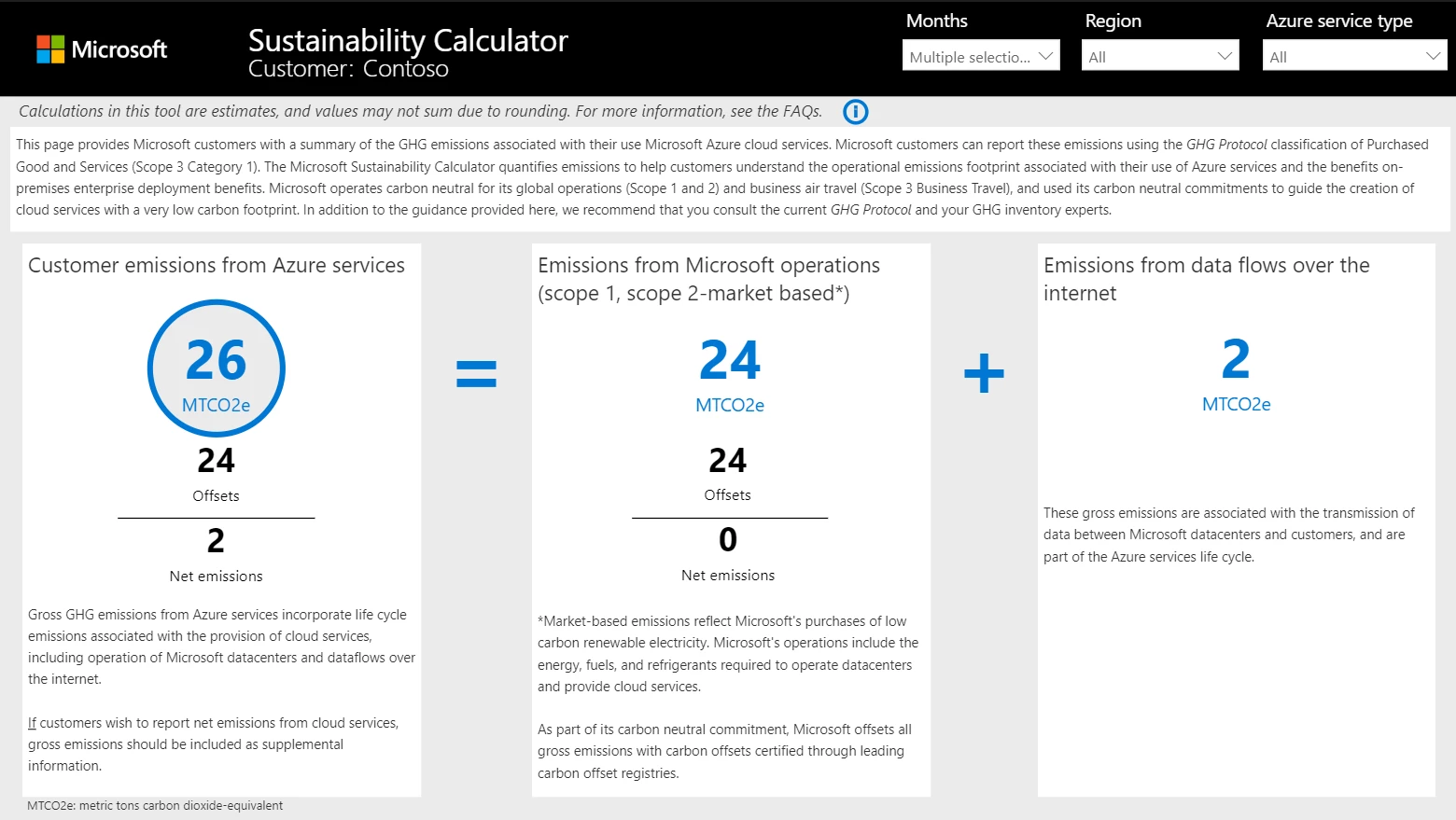Announcements, Azure Security Center, Hybrid + Multicloud
Microsoft Sustainability Calculator helps enterprises analyze the carbon emissions of their IT infrastructure
Posted on
3 min read

For more than a decade, Microsoft has been investing to reduce environmental impact while supporting the digital transformation of organizations around the world through cloud services. We strive to be transparent with our commitments, evidenced by our announcement that Microsoft’s cloud datacenters will be powered by 100 percent renewable energy sources by 2025. The commitments and investments we make as a company are important steps in reducing our own environmental impact, but we recognize that the opportunity for positive change is greatest by empowering customers and partners to achieve their own sustainability goals.
An industry first—the Microsoft Sustainability Calculator
Today we’re announcing the availability of the Microsoft Sustainability Calculator, a Power BI application for Azure enterprise customers that provides new insight into carbon emissions data associated with their Azure services. Migrating from traditional datacenters to cloud services significantly improves efficiencies, however, enterprises are now looking for additional insights into the carbon impact of their cloud workloads to help them make more sustainable computing decisions. For the first time, those responsible for reporting on and driving sustainability within their organizations will have the ability to quantify the carbon impact of each Azure subscription over a period of time and datacenter region, as well as see estimated carbon savings from running those workloads in Azure versus on-premises datacenters. This data is crucial for reporting existing emissions and is the first step in establishing a foundation to drive further decarbonization efforts.

Providing transparency with rigorous methodology
The tool’s calculations are based on a customer’s Azure consumption, informed by the research in the 2018 whitepaper, “The Carbon Benefits of Cloud Computing: a Study of the Microsoft Cloud”, and have been independently verified by Apex, a leading environmental verification body. The calculator factors in inputs such as the energy requirements of the Azure service, the energy mix of the electric grid serving the hosting datacenters, Microsoft’s procurement of renewable energy in those datacenters, as well as the emissions associated with the transfer of data over the internet. The result is an estimate of the greenhouse gas (GHG) emissions, measured in total metric tons of carbon equivalent (MTCO2e) related to a customer’s consumption of Azure.
The calculator gives a granular view of the estimated emissions savings from running workloads on Azure by accounting for Microsoft’s IT operational efficiency, IT equipment efficiency, and datacenter infrastructure efficiency compared to that of a typical on-premises deployment. It also estimates the emissions savings attributable to a customer from Microsoft’s purchase of renewable energy.

We also understand customers want transparency into the specific commitments we are making to build a more sustainable cloud. To make that information easily accessible, we’ve built a view within the tool of the renewable energy projects that Microsoft has invested in as part of its carbon neutral and renewable energy commitments. Each year Microsoft purchases renewable energy to cover its annual cloud consumption. Customers can use the world map to learn about projects in regions where they consume Azure services or have a regional presence. The projects are examples of the investments that Microsoft has made since 2012.
A path to actionable insight
Azure enterprise customers can get started by downloading the Microsoft Sustainability Calculator from AppSource now and following the included setup instructions. We’re excited by the opportunity this new tool provides for our customers to gain a deeper understanding of their current infrastructure and drive meaningful sustainability conversations within their organizations. We see this as a first step and plan to deepen and expand the tool’s capabilities in the future. We know our customers would like an even more comprehensive view of the sustainability benefits of our cloud services and look forward to supporting and enabling them in their journey.